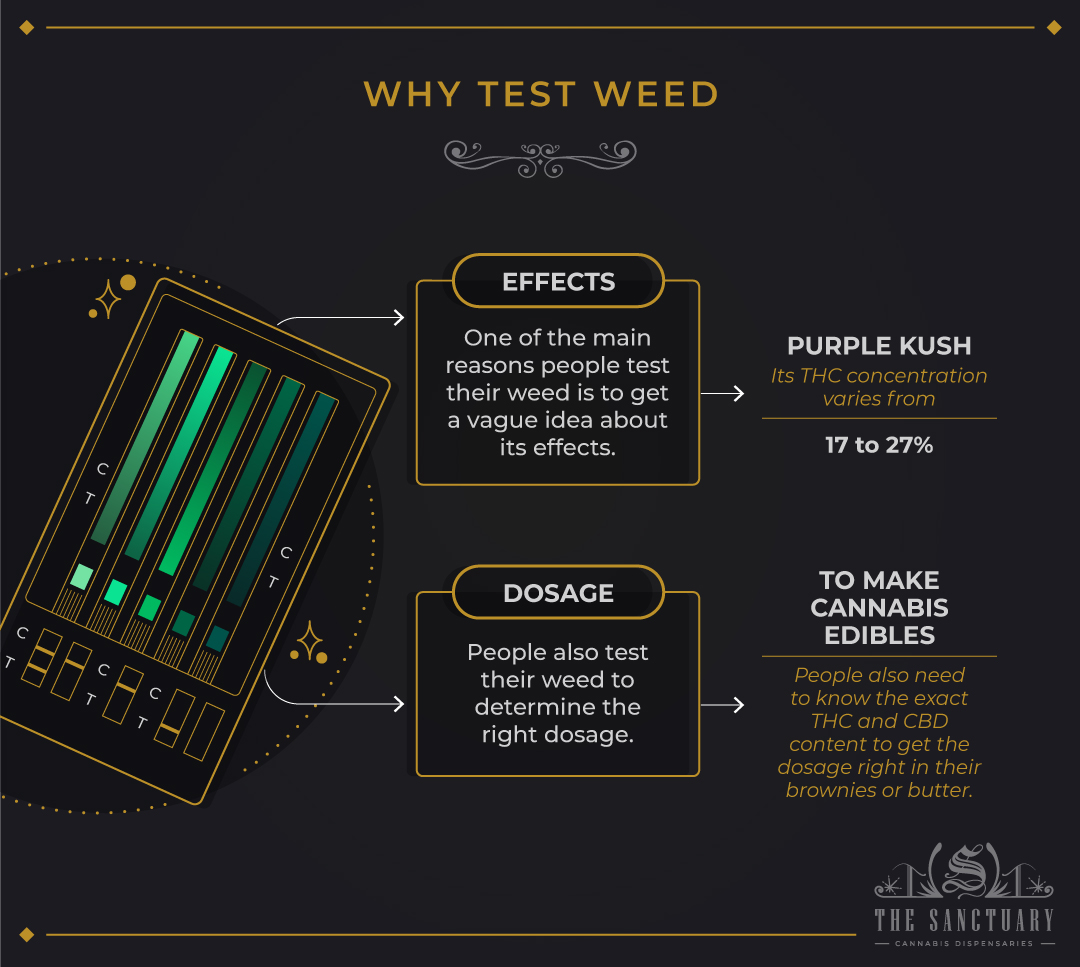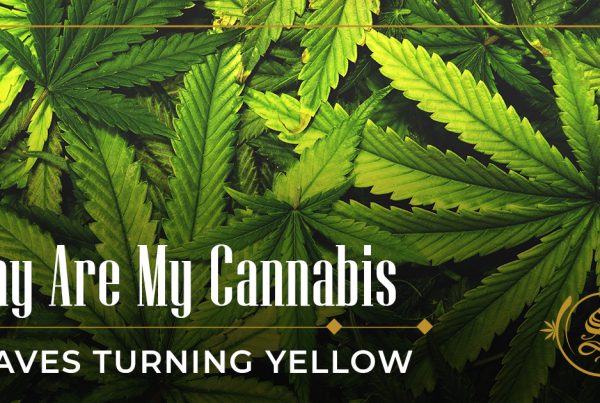While it’s possible to get some information about the concentration of CBD and THC in a weed strain from the product label, these figures are not always absolute. The weed strains available today come in different variations. Some may be THC-dominant, while others have a higher CBD content.
If you’re inclined toward using a certain variant, you might want to test the strain. There are quite a few DIY methods of testing weed. Let’s discuss them in detail.
Why Test Weed

Recreational weed users often don’t mind being surprised by the potency of a new weed strain. However, many holistic and occasional users want to know exactly which compounds they’re inhaling or consuming.
One of the main reasons people test their weed is to get a vague idea about its effects. Let’s take the example of Purple Kush. Its THC concentration can range from 17% to 27%. Growth conditions and environmental factors like curing, drying, lighting, and flushing can affect the THC content of a strain.
The Purple Kush you get from a dispensary might display a THC concentration range. If you want to determine the exact concentration, you’ll have to test the weed yourself.
People also test their weed to determine the right dosage. While this is especially true for medicinal users, people who make cannabis edibles also need to know the exact THC and CBD content to get the dosage right in their brownies or butter.
3 Ways to Test Weed at Home
If you don’t want to send weed for lab testing, there are three methods to test its potency at home. We describe them below.
1. Color Chart Testing
If you did the litmus paper pH test in school, you wouldn’t have any trouble with this method of testing weed. All you need is a testing kit that you can buy from a dispensary or an online store. Here’s how to use this kit:
- Fill the container with the test fluid. Both items come in the kit.
- Add a small amount of weed to this fluid.
- Shake the container gently and wait for it to change color.
- Check the color change against the color chart to determine the THC or CBD concentration in your sample.
Color chart tests are much cheaper than other methods, but they’re also the least effective. Most tests have a limit on the THC and CBD concentration they can determine. For example, some may only test for a maximum of 2.5% CBD and 20% THC.
2. TLC Testing
Thin-layer chromatography is an analytical technique to separate compounds in a mixture. Besides THC and CBD, the method can also help you determine the amount of THCV, CBG, CBN, and other cannabinoids in weed. However, this testing kit is more expensive than the color kit.
Here’s what comes in most standard kits:
- Rulers for THC and CBD
- Pencil
- Jar
- Gloves
- UV-C light
- Glass tubes
- Test tubes
- One pipette
- Testing Cards
- Testing liquid
Follow these instructions to use this kit:
- Add 0.1 grams of weed — extract, edible, or flower — into the test fluid.
- Put a small amount of this mixture in the glass tubes using the pipette.
- Place the tubes into jars with test fluid. The test fluid with the sample will wick the tube.
- Watch the color spots and match them with the testing chart to measure each compound’s quantity in the sample.
3. Gadgets
If you’re not too pumped about the idea of conducting scientific experiments in your kitchen, you can invest in a testing gadget instead. It will be expensive but useful for repeat testers, like cannabis breeders and growers.
To use this gadget, you have to put a small amount of weed in the device’s container. Connect the gadget to your smartphone through Bluetooth or an app.
Wait for a few minutes. The device will show you the concentration of major and minor cannabinoids and terpenes in your sample. The connected apps for many gadgets also show you other strains with similar cannabinoid content, in case you’re interested.
How to Test Weed In a Lab?
Lab testing is a feasible option if you only need to test weed once. Since testing a single sample can cost above $100, it’s better to resort to this method only when you have no other choice.
Commercial entities, like dispensaries and online sellers, usually use lab testing. Labs use chromatographic techniques to measure the concentration of individual cannabinoids and terpenes in a weed sample.
Depending on the test type and how much you pay, some labs will also give you information about other constituents of your sample, including microbes and heavy metals. Some tests also check for the presence of pesticides in weed to determine its safety.
Can You Test All Weed Types?
The type of weed you can test will depend on the method you use. For example, some methods will only let you test for THC in flowers. Others may check for THC in oils, edibles, extracts, and concentrates too.
Similarly, some labs only give you information about the cannabinoid content, whereas others conduct detailed tests to check for the presence of heavy metals and pathogens too.
So, there’s a method to check all types of weed. However, the cost and complexity of each method will differ.
If you’re a holistic user who wants to continue using weed for a long time, invest in a gadget. Occasional testers are better off with the TLC or color change test kits.
How Accurate Is Weed Testing?
Lab testing and TLC testing kits are highly accurate since both use high-tech tools to measure the potency and other parameters of weed. Both these methods are also favored in the holistic cannabis community.
On the other hand, color change kits are relatively less accurate but work best for strains with small variations in cannabinoid levels because the color change indicators show minor changes in potency.
Conclusion
Testing weed is possible, both at home and at a lab. Opt for the former if you need a quick and cheap DIY method. Use the latter for commercial weed testing purposes.






